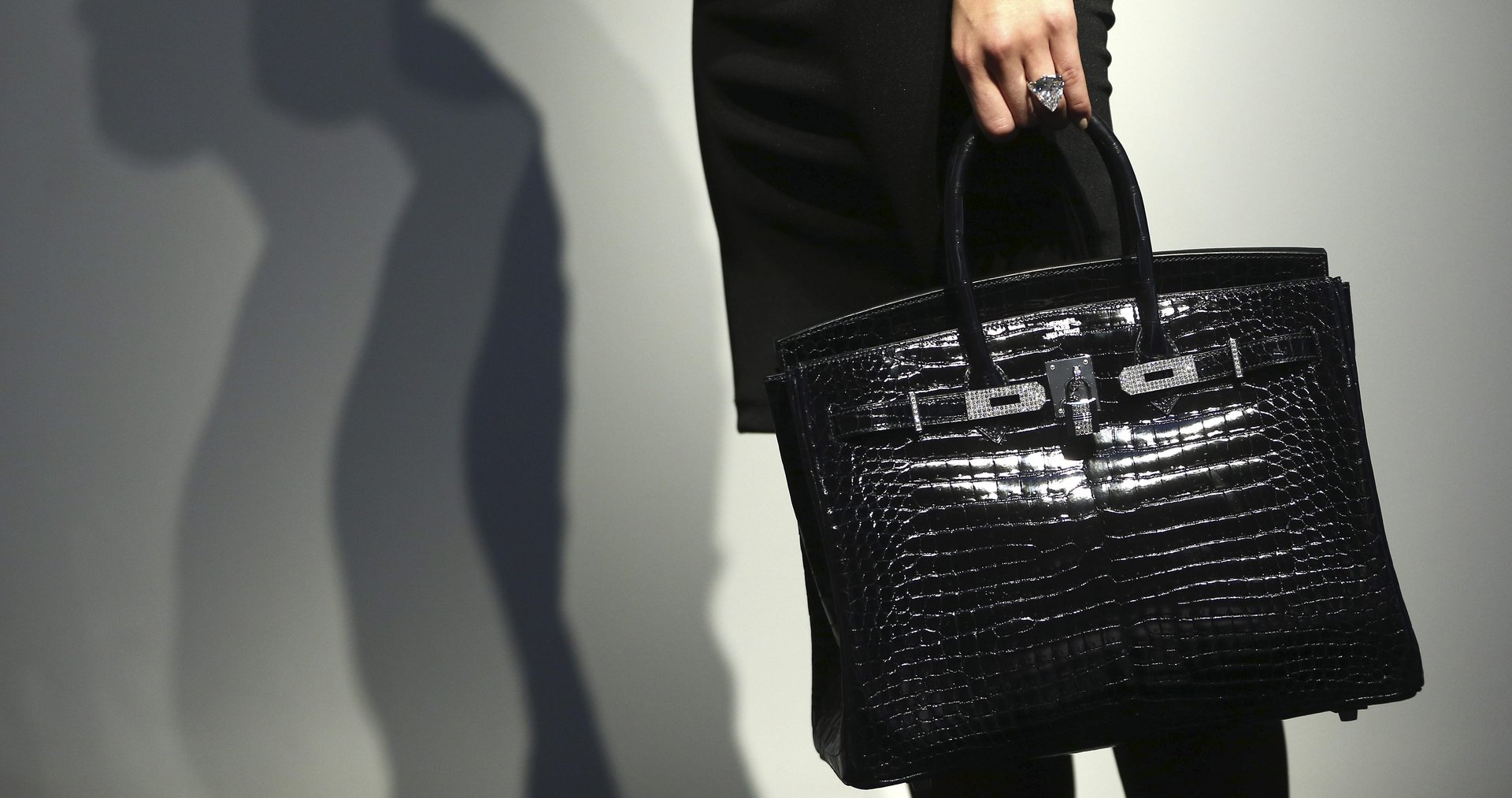Why a Hermès handbag can be a better investment than art
If you were looking for a nice short-term investment in 2019, you may have been better off putting your money into one of Hermès’s rare handbags than the work of a long-expired painter, according to an analysis by global real-estate consultancy Knight Frank.


If you were looking for a nice short-term investment in 2019, you may have been better off putting your money into one of Hermès’s rare handbags than the work of a long-expired painter, according to an analysis by global real-estate consultancy Knight Frank.
The firm found Hermès handbags increased the most in value in its 12-month index of what you might call alternative investment assets, including art, stamps, rare whiskey, watches, coins, cars, and more. (Traditional financials assets such as stocks and bonds weren’t included). Over 12 months, its bag index grew 13%, well above the runners up of stamps (6%) and art (5%). Knight Frank published the numbers in its annual wealth report on investment and luxury, using data provided by Art Market Research, which has an established methodology 1 for analyzing the value of the art, antiques, and collectibles markets.
The analysis focused specifically on bags by Hermès, whose most collectible styles—the famed Birkin and Kelly, and sometimes the Constance—dominate a small set of handbags that can actually grow in value over time. They’ve fetched eye-watering sums at auction in recent years. A Birkin in white crocodile hide went for around $380,000 in 2017—the most expensive bag ever sold at auction. Desire for such pieces has only grown. “Indeed, such is the demand that Christie’s now host[s] seven live and online auctions each year, in Asia, the US and the UK,” Knight Frank said in its report.
Besides being known for their craftsmanship, the bags are big-time status symbols with prices beginning at several thousand dollars and distribution that remains under Hermès’s tight control. The rise of luxury resale once seemed to threaten their exclusivity by making greater numbers available, yet they remain the rare fashion accessory that’s often more expensive on the secondary market than purchased directly from their maker. In a recent story, the Wall Street Journal noted that, according to research by investment firm Bernstein, the estimated 120,000 Birkin and Kelly bags Hermès releases combined each year contribute 25% to 30% of its total sales.
Among those bags are new fabrications, such as different materials or colors, which Hermès releases in very small quantities that keep existing Hermès owners returning for more. Rare styles sell for the highest prices at auction, likely driving up the value of Hermès bags overall in Knight Frank’s index.
The big caveat to investing in a handbag is you’ll probably need to keep it pristine, meaning you can’t really use it to schlep your lunch to work. They also didn’t appreciate as much over a long period as other items in Knight Frank’s index. Looked at over 10 years, rare whiskey was the clear winner.
Collectors did shell out some record sums for art by living artists in 2019—see Jeff Koons’s $91 million “Rabbit”. But overall the market has seen prices falling as fewer high-end works, such as those by impressionists and modern masters, come up for sale.
Still, in the past decade, art has actually grown in value more than handbags, so if you’re looking for long-term returns, a painting might still be a better option.